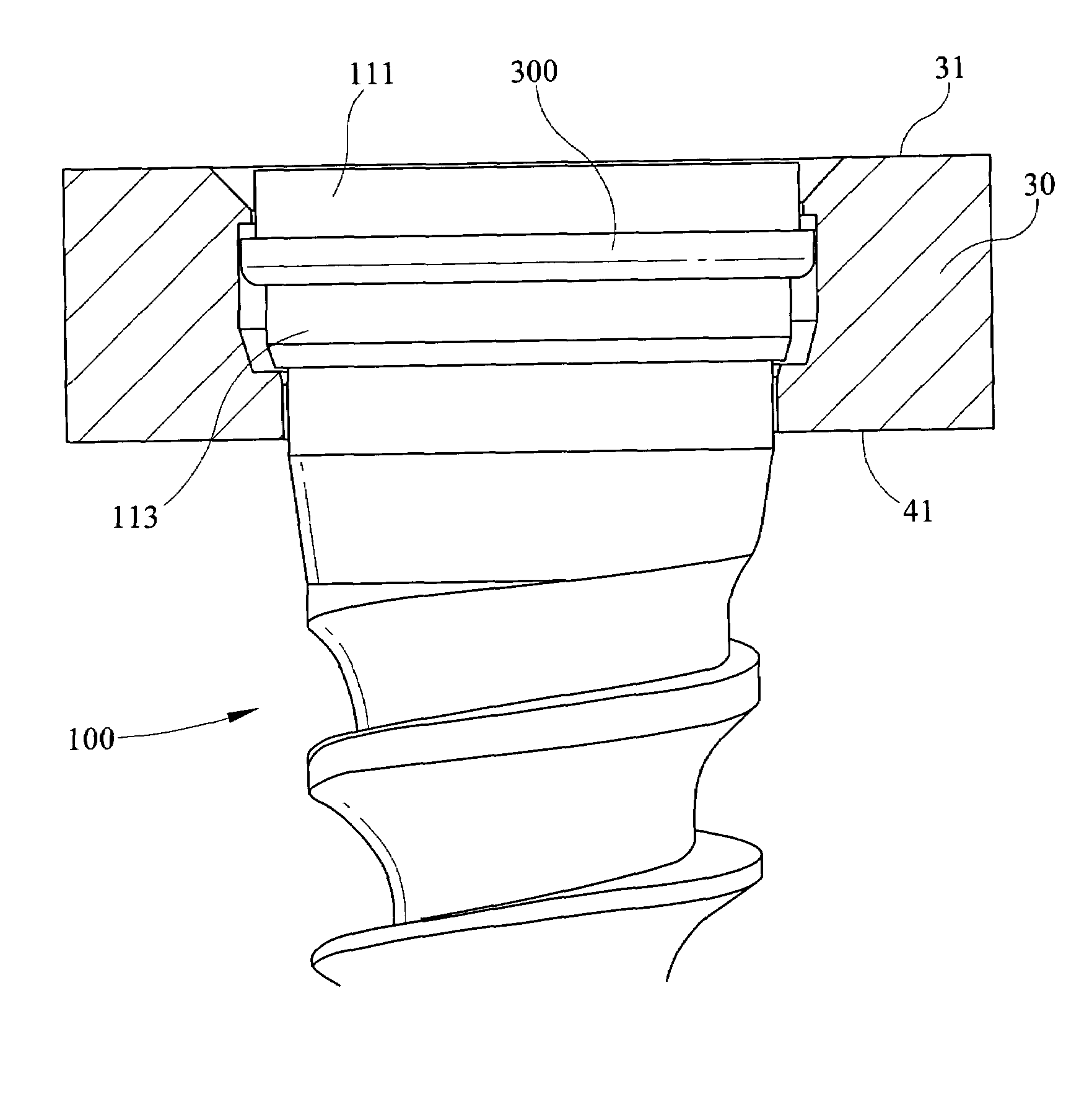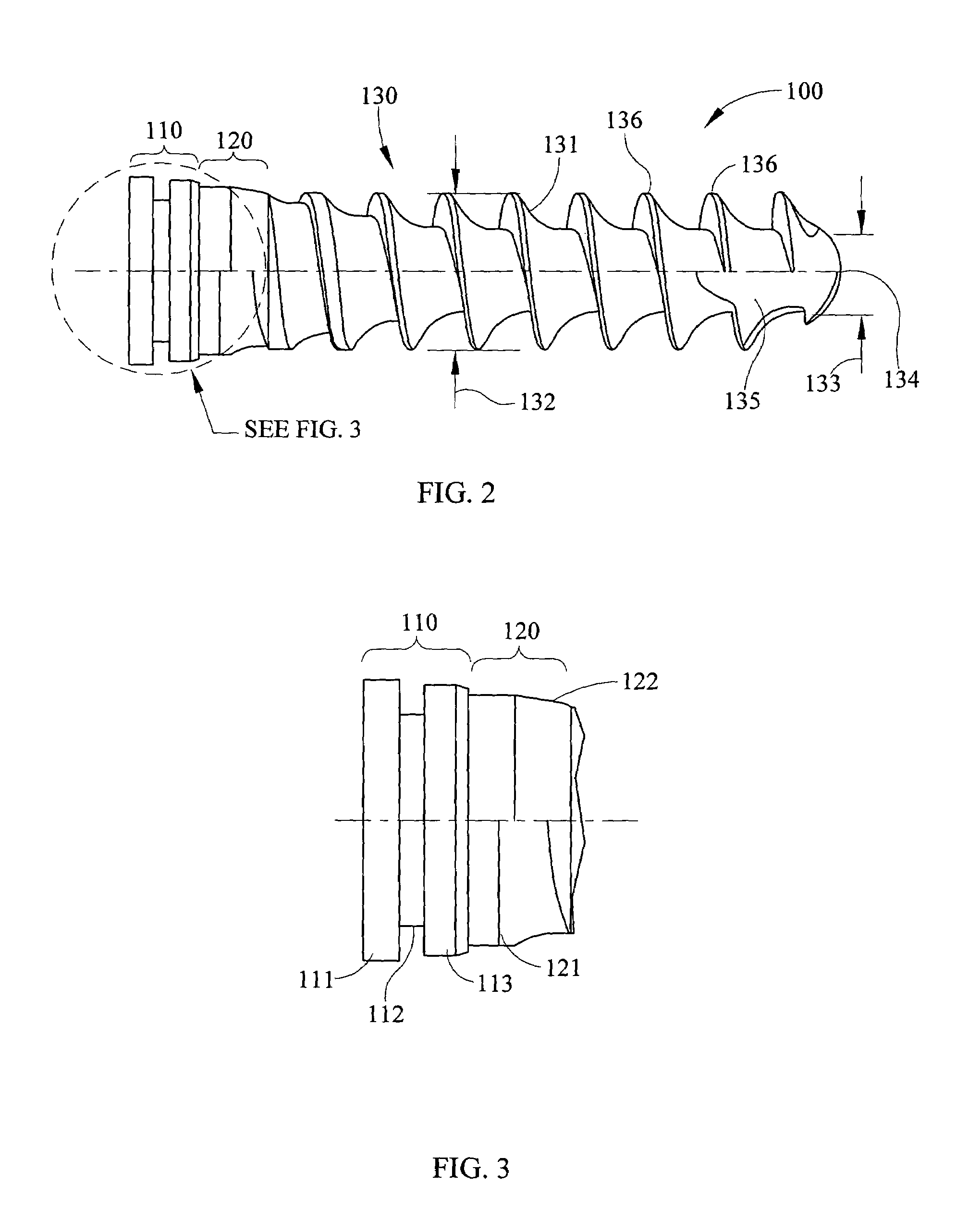Fixed and variable locking fixation assembly
a fixed and variable technology, applied in the field of locking fixation assemblies, can solve the problems of increased difficulty in maneuvering, increased difficulty in surgery, and severe complications of upper cervical spine procedures, and achieve the effect of facilitating a smooth transition
- Summary
- Abstract
- Description
- Claims
- Application Information
AI Technical Summary
Benefits of technology
Problems solved by technology
Method used
Image
Examples
Embodiment Construction
[0040]While the present invention will be described more fully hereinafter with reference to the accompanying drawings, in which particular embodiments and methods are shown, it is to be understood from the outset that persons of ordinary skill in the art may modify the invention herein described while achieving the functions and results of this invention. Accordingly, the descriptions which follow are to be understood as illustrative and exemplary of specific embodiments within the broad scope of the present invention and not as limiting the scope of the invention. Similarly, the present invention is applicable to any structure requiring a fastener, such as a screw 10, that is easily installed in a plate-like member, yet requires relatively great force to remove it from the plate-like member. For the purposes of discussion and ease of understanding, the system of the present invention will be described herein as applicable to a bone fixation plate system wherein an orthopedic plate...
PUM
 Login to View More
Login to View More Abstract
Description
Claims
Application Information
 Login to View More
Login to View More - R&D
- Intellectual Property
- Life Sciences
- Materials
- Tech Scout
- Unparalleled Data Quality
- Higher Quality Content
- 60% Fewer Hallucinations
Browse by: Latest US Patents, China's latest patents, Technical Efficacy Thesaurus, Application Domain, Technology Topic, Popular Technical Reports.
© 2025 PatSnap. All rights reserved.Legal|Privacy policy|Modern Slavery Act Transparency Statement|Sitemap|About US| Contact US: help@patsnap.com



